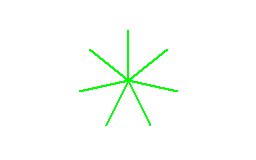How much does it cost to print in braille?
Giuseppe Di Grande Published the 04/11/2017 00:00
The cost of Braille printing has always been a mystery. Prices per Braille page vary so much that, honestly, even if I were in the dark about these printing processes, I wouldn't understand anything either. Probably when a teacher receives a Braille book and learns about its costs, they scrutinize the book well in search of a gold watermark.
Do you really want to know how much it costs to print in Braille? Come with me and I'll explain it to you.
Let's make one thing clear: anyone can print in Braille, any type of document. For example, a school can print Braille lessons and documents for visually impaired students. Predominantly literary texts can be printed without any special adaptations, while for others, those more technical, some adaptation is needed depending on the type of text.
But what does it take to print in Braille?
- A Braille printer.
- Sheets of higher grammage.
- Appropriate Software. Do you know one? (just kidding).
Over the years, I have encountered several Braille printers, and my favorites are the Index printers. However, you can use any brand of Braille printer. What varies is the amount of swearing to get it to work, in addition to the printing speed and quality.
Okay, let's get to the painful point: I swear it's just this, there are no other surprises.
A good Braille printer costs around 12,000 euros.
Hold on a moment! I was joking a bit. That is the best printer in terms of quality and price for professional use. For home or school use, you can settle for printers that cost between 3,000 and 4,000 euros, depending on the brand and model.
I won't deny it, it's still a significant expense.
There are single-sheet Braille printers and continuous form printers. My favorites are the single-sheet ones, and I'll explain why.
Continuous form sheets of suitable weight are almost exclusively found in assistive technology retailers for the blind. They cost a bit more. After printing, to organize the pages, the sheets need to be detached, etc.
Single-sheet printers accept A4 or A3 sheets or various sizes. Let's focus on A4 sheets, whose dimensions you all know because you use them in standard inkjet printers. You can find A4 sheets of suitable weight at any office supply store. Personally, I buy them online, where they cost less. The cost ranges from 4 to 5 euros per ream of 250 sheets. Interesting, isn't it?
Once you've overcome the initial hurdle of finding the money to purchase the printer, more of a problem for schools than for individuals because individuals can receive it on loan from the National Health Service, let's move on to the weight of the sheets.
The sheets must be of suitable weight. The recommended weight ranges from 140 to 160 grams/sq m. Braille is printed by punches that strike the paper quickly. If the paper is too thin, it tears.
And the Software? Naturally, the Software is Biblos, completely free. I swear I know it perfectly, also because I developed it myself.
Biblos is used to print documents with these particular printers. It converts the text of the documents into data useful to the printer so that it prints correct Braille text.
One ink page usually takes from 2 to 3 Braille pages. For example, having a textbook of 300 pages, in Braille, the same book will have 900 pages.
Printing 900 Braille pages would cost you less than 10 euros. Remarkable, isn't it?
Forget that printing in Braille is a difficult thing. Literary subjects are printed in Braille with extreme simplicity, thanks also to Biblos. Knowing Braille is not essential.
For further support you can subscribe the Biblos Group on Facebook.
